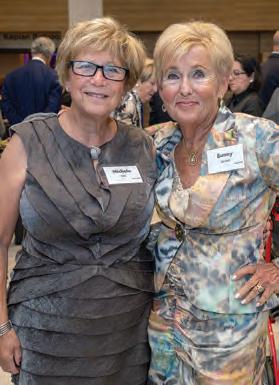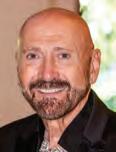
< NAUGHTY NUPTIALS: Sarasota Ballet presents Ashton’s ‘The Wedding Bouquet.’ 3
BLACK TIE INSIDE:
SARASOTA ORCHESTRA: Patrons spend a night at the Pops Supper Club. 7 >



< NAUGHTY NUPTIALS: Sarasota Ballet presents Ashton’s ‘The Wedding Bouquet.’ 3
SARASOTA ORCHESTRA: Patrons spend a night at the Pops Supper Club. 7 >

APRIL 24, 2025


Westcoast Black Theatre Troupe tells the history of tap dancing in ‘Syncopated Avenue.’
MONICA ROMAN GAGNIER
ARTS + ENTERTAINMENT EDITOR
If you’re not a “Dance Mom,” your cultural references to tap dancing may be few and far between. Most people know about the iconic interracial duet between 6-year-old Shirley Temple, “America’s Sweetheart,” and Bill “Bojangles” Robinson in the 1935 film “The Little Colonel.”
Another young tapper, Savion Glover, captured America’s heart in “The Tap Dance Kid,” a hit Broadway show in the 1980s.
A grown-up Glover, then the star of “Bring in ’da Noise, Bring in ’da Funk,” dazzled viewers of the 1997 Grammy Awards ceremony with his fancy footwork. His tap duel with Colin Dunne of “Riverdance” brought together representatives of the two veins of tap — African American and Irish. Because of its competitive nature, tap dancing has often pitted brothers against each other in dazzling displays of artistry. Gregory and Maurice Hines were originally modeled on the tap-dancing Nicholas Brothers. Art imitated life (Or was it the other way around?) when the Hines
brothers played feuding siblings in Francis Ford Coppola’s 1984 film “The Cotton Club,” about the heyday of Harlem nightlife. If there’s anyone in Sarasota who can teach audiences about the history of tap in an entertaining fashion, it would have to be Nate Jacobs, founder and artistic director of Westcoast Black Theatre Troupe. Before Jacobs founded WBTT 25 years ago, he was an elementary school teacher. He got his start writing and directing musicals to teach his young pupils how to focus.
Jacobs’ older brother, Michael, is a semi-retired lawyer. Both Jacobs brothers enjoy historical research. They put that skill to good use last year when they collaborated on the musical “Ruby,” based on the truelife story of a Black woman accused of murdering her white physician in 1950s Florida. Now, the Jacobs brothers have created a singing, dancing history of African American tap called “Syncopated Avenue,” which runs through May 25 at WBTT.
IF YOU GO
‘SYNCOPATED AVENUE’ When: Through May 25
Where: Westcoast Black Theatre Troupe, 1012 N. Orange Ave.
Tickets: $22-$52
Info: Visit WestcoastBlackTheatre.org.

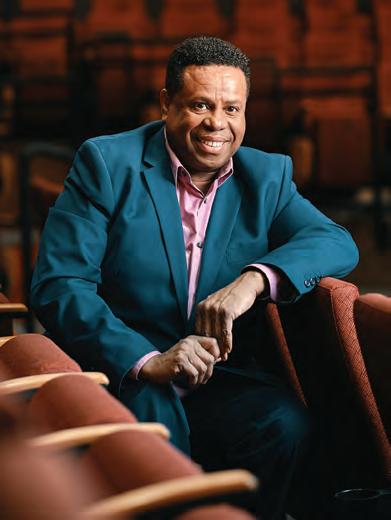
“Tap is derived from African slave dance ... But with the exception of the Broadway show ‘42nd Street,’ you seldom see African Americans tapping anymore.”
— Nate Jacobs, founder and artistic director of Westcoast Black Theatre Troupe
Why tap? Jacobs feels that the art form is often neglected and that it could even be in danger of dying out over the long term.
“Tap is derived from African slave dance,” Jacobs says. “Bill Robinson, Sammy Davis and others grabbed that dance form. So did Fred Astaire and Gene Kelly. But with the exception of the Broadway show ‘42nd Street,’ you seldom see African Americans tapping anymore.”
Part of the reason is that young Black dancers have spearheaded the development of break dancing, hiphop and its dance cousins. For better or worse, many young people, regardless of race, see tap-dancing as old-fashioned.
Jacobs wants to change that stereotype at the same time he pays tribute to tap’s history. With its duets and duels, tap gives dancers a lot of room for improvisation.
With “Ruby,” WBTT demonstrated for the first time that it was capable of producing a full-fledged musical in addition to presenting musical revues and productions of African American repertory.
MAKING BIG LEAPS
What’s the difference between a revue and a musical? The former is light on libretto (spoken word) and lacks character development and a story line. Many of the hit shows on Broadway are scathingly dismissed as “jukebox” musicals because they have stars performing hit songs but no real story.
WBTT’s “Ruby” recently had a run in Detroit from Feb. 7-9 at Motown’s Music Hall Center for the Performing Arts. The production was attended by 5,000 people, said Jacobs, who got help producing the Michigan show from Real Times Media, the Knight Foundation and the Michigan Chronicle.
Can lightning strike twice for the Jacobs brothers with their second collaboration? Nate thinks so, but it’s up to audiences to decide.
Although he is known for his creative vision, Jacobs’ superpower is spotting talent. He did that when he first cast an unknown Sheldon Rhoden in “Marvin Gaye: Prince of Soul,” which WBTT revived for the fourth time in its 2023-24 season.
Jacobs’ latest discovery is Lamont Brown, a tap dancer he first saw in a Norwegian Cruise Line show a few years back. Like many other performers in Florida, Jacobs has taken his talents to the seas.
“I was doing some work for Norwegian and they were producing their first all-Black show, ‘After Midnight.’ Lamont was one of the tappers in the show,” he says.
Jacobs got a chance to meet Brown and put his contact information in his files for future reference because he was so impressed with his talent.
But Brown wasn’t a complete unknown. He later was a member of the Broadway touring production of the “Funny Girl” revival. When the show came to Tampa, Jacobs drove up and held a meeting with him.
“While I sat with him, I got inspired,” Jacobs recalled during a telephone interview. “I decided to create a new show. I played with a tune and decided to name the show, ‘Syncopated Avenue’ about the history of tap. I knew Lamont had the chops to do it.”
While WBTT’s mission includes training and casting local artists to tell African American stories, sometimes Jacobs has to go out of town to find the performers and creative collaborators he needs to fulfill his vision.
That was true with “Ruby,” where Los Angeles-based actress Ashley Elizabeth Crowe played journalist Nora Zeale Hurston, who was sent to report on the trial and is a main character in the show.
Composer Nehemiah Luckett was credited with creating “additional music” for “Ruby,” but his experience with orchestral arrangements elevated the production, according to Jacobs.
A SHOW WITHIN A SHOW
“Syncopated Avenue” tells the story of a retired African American tap dancer named Duke whose dance studio is threatened by waning interest in tap and neighborhood gentrification. Duke is played by James T. Lane, who shared the role of Louis Armstrong with James Monroe Iglehart in the recent Broadway show, “A Wonderful World.”
Brown plays Percy, a dancer who helps Duke stage a 25th anniversary celebration for his struggling dance

studio. Giving Percy a hand with the show within a show, which takes up the last half-hour of “Syncopated Avenue,” is Duke’s granddaughter, Felicity. She is played by Kaylee Olson, a native of the Pacific Northwest who now lives in New York City. Olson auditioned for the role by videotape, Jacobs says.
“The show begins in the present time, but then it goes back to a nostalgic age,” Jacobs says. “It’s a real cool fantasy world with colorful costumes.”
WBTT audiences got a little bit of this dream-like treatment with the recent production of “Five Guys Named Moe,” a musical tribute to blues pioneer Louis Jordan.
Helping to create the fantasy world in “Syncopated Avenue” are costume designer Christopher Vergara, set designer Shartoya Baptiste and lighting designer Michael Paquini.
After the Jacobs brothers began creating their tap-dance musical



around Brown, they enlisted the help of choreographer Jason Bernard, who is an instructor at the Broadway Dance Center, where Savion Glover studied as a child. Through Bernard’s connections and by holding an audition in New York City, WBTT found 10 of the 13 tappers who are performing in “Syncopated Avenue.”
Brown is the choreographer for the show, while Bernard gets associate choreographer credit.
All of the music in the show is original, says Jacobs, with the exception of three classic songs — Duke Ellington’s “It Don’t Mean a Thing,” George and Ira Gershwin’s “For You, For Me, For Evermore” and “The Sweetest Sounds,” from Rodgers and Hammerstein’s “Cinderella.”
Nate Jacobs wrote the book for show. Lyrics are by Nate and Michael Jacobs and music is arranged and orchestrated by Louis Danowsky. “Ruby” veteran Luckett is back, this time as music supervisor. Dan Sand-
er-Wells is music director. Will “Syncopated Avenue” travel to another city the way that “Ruby” made its way to Detroit? Perhaps.
Nate and Michael Jacobs own the rights to the production, so it’s up to them to sell other theaters on their latest creation. Unfortunately, they don’t have that level of control over “Marvin Gaye: Prince of Soul,” which Nate Jacobs has been itching to take to New York and also has in mind for WBTT’s next sojourn to the International Black Theatre Festival in Winston-Salem, North Carolina. The next edition of the biennial festival will be held in August 2026 so he’s got some time to negotiate rights issues with the Marvin Gaye estate. In the meantime, Jacobs will try to spark local interest in the traditions and timelessness of tap. Who knows?
The next “Tap Dance Kid” could be sitting somewhere in the audience at WBTT’s Donelly Theatre.






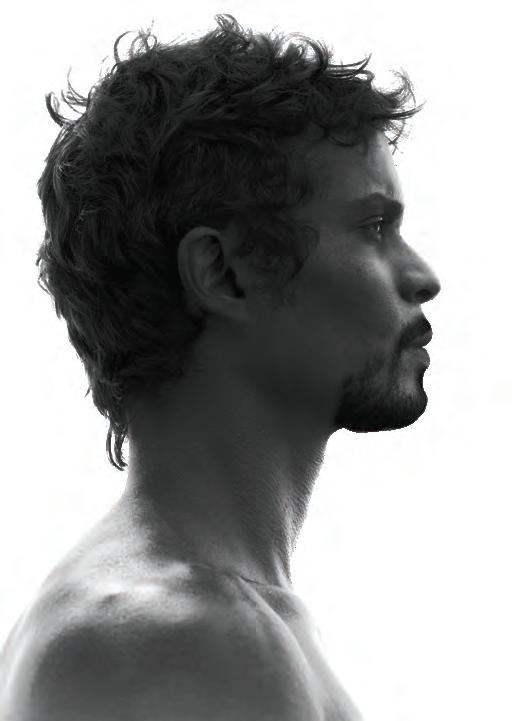







Not all the guests are pleased about the nuptials, the dog least of all.
MONICA ROMAN GAGNIER
EDITOR
Gertrude Stein wrote, “A rose is a rose is a rose,” but is it also true that “a ballet is a ballet is a ballet?” If she were still alive, we would ask Stein, a literary lion of the 20th century known for her love of word play.
Stein wrote the libretto for Sir Frederick Ashton’s “The Wedding Bouquet,” which the Sarasota Ballet performs April 25-26 at the Sarasota Opera House. Under Executive Director Iain Webb and his wife, Assistant Director Margaret Barbieri, the Sarasota Ballet has championed the works of Ashton, whose ballets they both danced during their careers in the U.K.
Writing the text for a ballet would not have been on our bingo card of Stein’s accomplishments, but “The Wedding Bouquet” is full of surprises. We won’t tell you all of them, though. No spoilers here.
But we’ll give you a snippet from The New York Times review of a 1989 production by The Royal Ballet. The Grey Lady called the 1937 ballet “a mad stew of marriages of convenience, gossiping women, sour old love affairs, tipsiness and sexual ambiguities, with a good deal of wild sadness below the surface.”
“The Wedding Bouquet” was choreographed by Ashton, England’s answer to George Balanchine, during the relatively carefree period between the two World Wars. Perhaps best memorialized by Evelyn Waugh’s “Brideshead Revisited,” it was a heady period of creative crosspollination and weekend house parties. Lord Berners, a friend of Ash-
IF YOU GO
‘THE WEDDING BOUQUET’
When: April 25-26
Where: Sarasota Opera House, 61 N. Pineapple Ave.
Tickets: $35-$125.
Info: Visit SarasotaBallet.org.
ton’s, composed the score and was also responsible for the scenario, costumes and set design of “The Wedding Bouquet.”
It was Berners, known as Gerald Hugh-Tyrwitt Wilson before he inherited his title, who suggested that Ashton create a ballet based on Stein’s play, “They Must Be Wedded.
To Their Wife.” Berners composed the score and was also responsible for the scenario, costumes and set design.
Stein was one of the literary giants who assembled in Paris during the 1920s that included Ernest Hemingway, James Joyce and others who made Sylvia Beach’s Shakespeare and Co. bookstore their gathering place.
Berners invited Stein and her partner, Alice B. Toklas, to England to work on “The Wedding Bouquet.”
The creative collaborators came together at Berners’ ancestral home, Faringdon, the inspiration for the estate Merlinford in Nancy Mitford’s “The Pursuit of Love.”
The ballet skewered the pretensions of the aristocracy, of which Berners was a member, as well as those trying to climb the social ladder. However, it was set in France, notes Barry Wordsworth, narrator for the ballet.
TWO TITANS OF ENGLISH DANCE
“Do you read music?” Wordsworth asks as he spreads out the score for “The Wedding Bouquet” on a table, with the words he will recite written
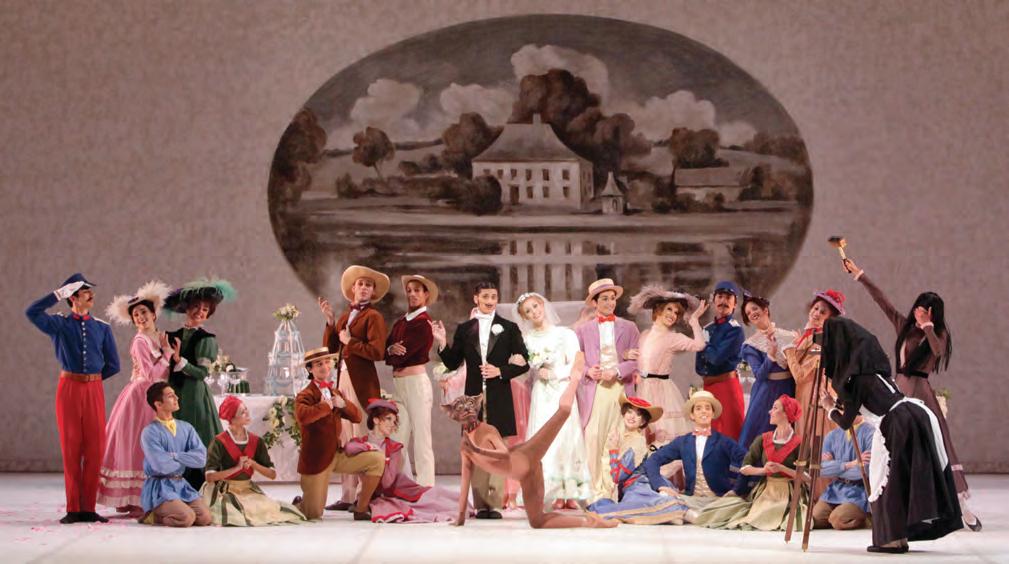
above the musical alphabet used for the score.
Unfortunately, the answer is no, which seems to take Wordsworth off guard. Before he can explain his musical pedigree, Grant Coyle, who is staging the production for the Sarasota Ballet, interjects, “Actually, Barry is quite famous.”
Indeed he is. Wordsworth was the music director of The Royal Ballet from 1990-95 and again from 200715. Today, he is the principal guest conductor of The Royal Ballet, which hosted the Sarasota Ballet for its triumphant guest residency in London during the Ashton Celebrated festival in June 2024.
Coyle is what is known as a “repetiteur,” a French word whose origins are the same as the English word “repeat.” In other words, Coyle is enlisted by ballet companies to help them replicate the works of choreographers no longer around. He is also a practitioner of the Benesh system, the dance world’s version of stenography. The visual notation system was developed by Joan and Rudolf Benesh in the 1950s, before video allowed dance companies to record the movements in a ballet. Some of the notations in Coyle’s book almost look architectural because they show the placement of company members on stage.
A native of Australia, Coyle trained at the Institute of Choreology in London, graduating in 1978. After that, he worked as a dance notator with The Scottish Ballet and the Sadler’s Wells Royal Ballet before becoming the principal dance notator for The Royal Ballet in 1987. He left in 2013 to become a freelancer.
This is the second time Wordsworth and Coyle, whom Webb knows from his career as an English dancer, have come to Sarasota to perform their respective roles in “The Wedding Bouquet.” The last time was in 2016, which marked the Sarasota Ballet’s premiere of the ballet. The company hasn’t performed it since then.
Pressed for what those in the British ballet world think about the Sarasota Ballet becoming the guardians of Ashton’s works, Wordsworth said, “Some people think The Royal Ballet should perform more Ashton.”
Over the years, Ashton’s reputation was eclipsed by Sir Kenneth MacMillan, who succeeded him as director of the Royal Ballet in 1971, and MacMillan’s works took center stage.
In Ashton’s “The Wedding Bouquet,” set at the turn of the century, one of the main characters is Julia, who plays a woman cast off by the groom. She is “ruined,” according to the moral code of the era, and is teetering on the verge of insanity.

No one ever questions why Julia would attend her defiler’s nuptials, but she’s not the only one of the groom’s former paramours in attendance. There’s lots of drunkenness and dancing at the raucous celebration. This makes for a lively ballet that requires acting chops by the dancers, even if Wordsworth’s narration is letting the audience in on various secrets.
Are balletomanes (a word dropped with casual elegance by Coyle) surprised to hear words spoken at a ballet? According to Coyle and Wordsworth, most will have done their homework and know “The Wedding Bouquet” has theatrical elements, so the narration is not a shock.
Adding a comedic element to “The Wedding Bouquet” is Julia’s dog, Pepe, named for Stein’s Mexican terrier. Played by a younger dancer, Pepe acts as a surrogate of sorts for his mistress.
Long before Americans began bringing their “fur babies” everywhere, the French were devoted to their pets. It would not have been strange to see a dog at a French wedding in 1900, or perhaps even today. Still, Pepe makes a case for leash laws by acting out Julia’s miserable state of mind. Woof!

THURSDAY
ARTIST’S RECEPTION:
ROB RASHKOW
5 p.m. at Harmony Gallery, Beatrice Friedman Symphony Center, 709 N. Tamiami Trail
Free Visit SarasotaOrchestra.org.
In search of groovy people? You’ll find them on the walls and mingling in the crowd at this art exhibition of the same name by Rob Rashkow. Guitarist and vocalist Nino Pinelli will play blues music at the opening reception for this show, which continues through May 20 during building hours: 8:30-4:30 p.m., Monday through Friday.
‘BEETLEJUICE’
7:30 p.m. at Van Wezel Performing Arts Hall, 777 N. Tamiami Trail
$50-$135 Visit VanWezel.org.
Based on Tim Burton’s classic film, this musical tells the story of Lydia Deetz, a strange and unusual teenager whose whole life changes when she meets a recently deceased couple and a demon with a thing for stripes. With its witty book, surprising set, and a score straight out of the underworld, “Beetlejuice” is familiar and new at the same time — a winning formula for Broadway musicals based on hit films. Runs through April 27.
‘GOOD NIGHT, OSCAR’
7:30 p.m. at Asolo Repertory Theatre, 5555 N. Tamiami Trail
$35-$95 Visit AsoloRep.org.
‘JERSEY BOYS’
There are countless imitations, but there is only one “Jersey Boys.” Winner of both the Tony (Broadway) and Olivier (London’s West End) awards, the musical tells the true story of Frankie Valli and the Four Seasons, from their humble beginnings in the Garden State to induction into the Rock & Roll Hall of Fame. This isn’t a musical revue; it’s a full-fledged musical directed by Ben Liebert. Runs through May 31.
IF YOU GO
When: 8 p.m. Thursday, April 24. Where: FST’s Gompertz Theatre, 1265 First St. Tickets: $49-$69 Info: Visit FloridaStudioTheatre.org.
Oscar Levant has largely been forgotten by history. The celebrated pianist and raconteur is most famous for his role as Gene Kelly’s neighbor in “An American in Paris.”
Directed by Peter Amster, Asolo Repertory Theatre’s production of the Broadway hit show focuses on Levant’s appearance on “Tonight Starring Jack Paar,” where he spoke frankly about his mental health issues. Runs through April 26.
‘NO ONE IS FORGOTTEN’
7:30 p.m. at Urbanite Theatre, 1487 Second St.
$5-$44
Visit UrbaniteTheatre.com.
Written by New York playwright Winter Miller and directed by Urbanite Artistic Director Summer Dawn Wallace, “No One is Forgotten” is the moving tale of two female Americans who withstand captivity in a foreign prison through grit, humor and loving solidarity. The tale is based on real-life accounts of American journalists and aid workers imprisoned overseas. Runs through April 27.
FRIDAY
JAZZ AT TWO WITH HOT CLUB SRQ
2 p.m. at Unitarian Universalists of SRQ, 3975 Fruitville Road
$15-$20
Visit JazzClubSarasota.org.
Kick off the weekend with Hot Club SRQ, which plays Gypsy Jazz and bills itself as “an acoustic string, swing time machine.” The performance is part of Jazz Club of Sarasota’s weekly series at Unitarian Universalists of SRQ.
‘EVITA’
7:30 p.m. at Manatee Performing Arts Center, 3975 Fruitville Road $37 Visit ManateePerforming ArtsCenter.com.
Don’t cry for the Manatee Players! They’ve enjoyed the talents of Rick Kerby as their producing artistic director for over two decades. For their last production of the season, the community theater presents the Andrew Lloyd Webber/Tim Rice musical “Evita,” about the former first lady of Argentina who was beloved by the followers of her sometimes oppressive husband Juan Peron. Runs through May 11.

SATURDAY
COMEDY ROULETTE
8:30 p.m. at Florida Studio Theatre’s Bowne’s Lab, 1265 First St. $15-$18 Visit FloridaStudioTheatre.org.
Looking to have fun on a Saturday night in Sarasota without breaking the bank. Look no further than Florida Studio Theatre Improv Troupe. A team of four experienced improvisers delivers a mix of short form, long form and musical improv in the mashup of styles and techniques. Weekends through May 30.
SUNDAY
DERBY BOUND
3 p.m. at Northminster Presbyterian Church, 3131 61st St. $5 Visit SuncoastConcertBand.org.
For horse racing lovers, the day of the Kentucky Derby is a national holiday. The race isn’t until the first Saturday in May, but grab your best hat and get ready for the annual “run for the roses” with this concert by the Suncoast Concert Band. Call 941-907-4123 to check on ticket availability and please be sure to dial the right number. Sorry, no mint juleps will be served.
RING SARASOTA
5 p.m. at Pine Shores Presbyterian Church, 6135 Beechwood Ave. Free Visit RingSarasota.org.
Handbell ensemble Ring Sarasota has been making the rounds of local churches this season. This week, they bring their Celebrate! Join
DON’T MISS
‘GEORGE HARRISON: A GARDENER’S LIFE’
“George Harrison: A Gardener’s Life” is the ninth installment of the annual Jean and Alfred Goldstein Exhibition Series. Walking around the 15-acre sanctuary on the Sarasota bayfront where gardens and botanical displays have been erected to mirror those in Harrison’s estate, Friar Park, you can’t help feeling that the late Beatle would approve of this living tribute. After all, he dedicated his 1980 memoir, “I, Me, Mine” to “gardeners everywhere.” Runs through June 29.
IF YOU GO
When: 10 a.m. Sunday, April 27
Where: Marie Selby Botanical Gardens,1534 Mound St.
Tickets: $28
Info: Visit Selby.org.
the Party! program to Sarasota. The series features a selection of handbell arrangements, each capturing the spirit of a different month. We’re not making any promises, but “Singing in the Rain” is on Ring Sarasota’s set list so April showers may bring a performance of this piece.
TUESDAY
ARRIVAL FROM SWEDEN: THE MUSIC OF ABBA
7:30 p.m. at Van Wezel Performing Arts Hall, 777 N. Tamiami Trail
$55-$85 Visit VanWezel.org.
For fans of the Swedish rock group ABBA, here’s another chance to be a “Dancing Queen” all over again. The tribute band Arrival From Sweden has sold out arenas worldwide, performed with more than 120 symphonies and appeared on numerous TV and radio shows.




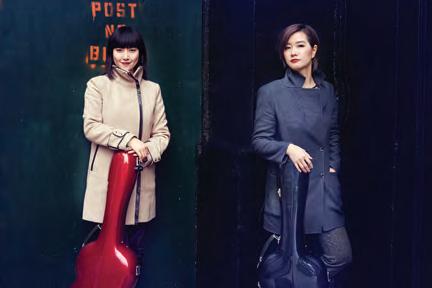


Joshua Harmon’s comedy caps Sarasota Jewish Theatre’s sell-out season.
MARTY FUGATE
ad Jews,” Sarasota Jewish Theatre’s latest production, creates edgy comedy in the minefield of authentic Jewish identity.
Joshua Harmon’s “Bad Jews” begins after the death of “Poppy,” the family patriarch. Three cousins arrive in a Manhattan studio apartment before their grandfather’s funeral. A farcical struggle for Poppy’s chai necklace ensues between the three. To the cousins, it’s far more than a piece of jewelry. It’s a potent symbol of family heritage. Chai is a letter in the Hebrew alphabet. It symbolizes “life.” Their grandfather was a Holocaust survivor. He risked his life to save that necklace. “Poppy” hid it under his tongue during his time in a Nazi concentration camp. Who’s entitled to it now?
Daphna sees it as a sacred link to her Jewish identity; Liam wants to give it to his non-Jewish girlfriend as a romantic gesture. They both stake a claim. Jonah stays neutral. Daphna and Liam fiercely argue. Their squabble becomes a proxy war for deeper issues of faith, family and what it means to be “good” Jew.
Director Gus Kaikkonen is right in the thick of that war of words. He notes that the fight is over serious issues. But “Bad Jews” is a seriously funny play. Harmon’s well-drawn personalities explain why.
“Each character has a cri de cœur — a soul-baring moment,” he says. “That’s a gift for actors. They can go deep. But those emotional outbursts are also hilarious because they’re so raw and real.”
According to the director, the combative cousins both claim cultural authenticity. They use that claim as a form of leverage — one that entitles
them to the chai necklace and the family history it represents. That said, these millennials are separated by nearly a century from what their grandfather endured.
Kaikkonen notes that the shadow of the concentration camps looms large. But “Bad Jews” isn’t a Holocaust play.
“The cousins are all in their 20s,” he says. “Their late grandfather survived the Holocaust — and that impacts them. But they didn’t live through that trauma directly. ‘Bad Jews’ is about what it means to be Jewish now. It reflects ongoing conversations in Jewish communities — and honestly, any community wrestling with tradition and change.”
While the play asks big questions, Kaikkonen stresses that it’s not an “issues” play. “I’d describe it as a family play,” he says. “Any politics are family politics.”
The director adds that the family is very specific, but their conflicts are universal. “On the surface, the cousins are fighting about a necklace,” he says. “But it’s more of an excuse than a reason. You could plug in politics, science, religion — anything people fight about over dinner. That’s what makes these characters so relatable.”
The actors must express their characters’ emotional depths. At the same time, they’ve got to get the audience laughing.
Kaikkonen says they’re up to the challenge. “Our cast is really good,” he says. “They’re already deep in rehearsals. What’s especially lovely is that the actors genuinely like each other — and, more importantly, trust each other. That’s essential — because their characters definitely don’t.”
The conflict boils inside Steve Patmagrian’s sleek set. “It’s a high-end studio apartment, but there’s not much space,” the director says. “It’s a lot like ‘No Exit.’ Everyone’s bottled up inside with each other. It’s a pressure cooker environment with no escape. We’ve all been there.”
A FAMILY SQUABBLE TO WHICH EVERYONE CAN RELATE
He adds that you don’t have to be

Jewish to relate to this incendiary squabble. The play’s family feud resonates across cultures. For Kaikkonen, directing “Bad Jews” often induces a sense of déjà vu. “I definitely recognize the dynamics from my own family,” he laughs. “That part hits close to home for me. Our audience will feel the same way.”
Kaikkonen notes that the play’s title makes some folks flinch. Even the London transit system refused to
run posters for “Bad Jews.” But this production is already sold out. Why?
“There’s only one explanation,” he says. “Sarasota Jewish Theatre’s audience is fearless.”
But not every theatergoer is. Why call your play “Bad Jews” in the first place?
“The playwright knew what he was doing,” Kaikkonen explains. “The title’s provocative by design. It grabs attention — which a good title
IF YOU GO
‘BAD JEWS’
When: May 1-11
Where: The Sarasota Jewish Theatre, 3501 S. Tamiami Trail
Tickets: $30-$42
Info: Visit SarasotaJewishTheatre.com
should do. But Harmon’s not calling anyone a ‘Bad Jew.’ He’s examining who gets to define what that means — and how people weaponize that definition inside families. It’s about power dynamics, not name-calling. In the play, the conflict’s rooted in the Jewish experience. But the play’s family power struggle is experienced across every culture.”
Carole Kleinberg is Sarasota Jewish Theatre’s artistic director. “Bad Jews” is one of the most produced plays in the country. Why did it take so long to hit the SJT stage?
The answer is simple. “I didn’t like the title. I’ve passed on the opportunity to produce it in the past.”
What changed Kleinberg’s mind?
“I realized that the playwright is a serious playwright who tackles tough issues. ‘A Prayer for the French Republic’ is making quite a stir,” she says. “When I read the script for ‘Bad Jews,’ I realized he’s really asking what it means to be a good Jew. It’s smart writing on so many levels.”
Once “Bad Jews” was in the lineup, it quickly sold out. Every play this season has also packed the house. Last season was sold out, too. How does she feel about that? I’m just stunned,” she says. “I couldn’t be more thrilled.”
What’s the secret of SJT’s success?
“I think our quest for excellence is paying off,” she says. “From acting to directing to stagecraft to the script, it’s always first rate. We’re not a community theater, we’re a professional theater. That’s the standard we set, and audiences respond.”


Artist Series Concerts names new executive director
Artist Series Concerts of Sarasota has hired Keren Shani-Lifrak as its new executive director. Lifrak will start her new job May 1. She will work alongside the current executive director, Marcy Miller, until Miller retires on June 30.
Lifrak has more than 25 years of experience in performing arts, nonprofit management, event production, marketing and development in Sarasota, New York and Tel Aviv.
As director of marketing for IMG Artists and director of development for IMG Academy, she worked with world-renowned artists such as violinist Itzhak Perlman and the Joffrey Ballet, as well as top athletes.
Lifrak previously led Arts Day in Sarasota, an annual event that attracted 30,000 visitors and involved major arts and community organizations. Organized by the Arts and Cultural Alliance of Sarasota County, it was a free event that ran for nearly two decades until 2009.
In addition to the Arts and Cultural Alliance, Lifrak also directed events for the Sarasota Film Festival and Marie Selby Botanical Gardens.
“Keren comes to Artist Series Concerts of Sarasota with an impressive background of leadership
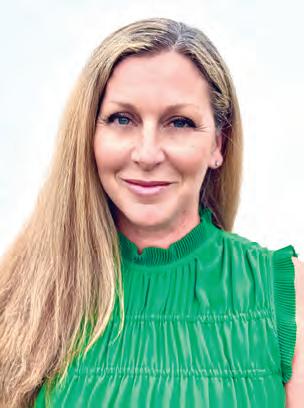
in arts management, development and programming,” said David Chivas, chairman of the group’s board of trustees. “She recognizes our mission of being a champion for emerging artists and intends to continue that goal.”
The organization, known as Artist Series Concerts of Sarasota, was conceived in 1996 by co-founders Jerold Ross and Lee Dougherty Ross. Dedicated to promoting excellence in live musical performance, it presents about 25 concert programs a year.
Daniel Jordan, Artist Series Concerts’ director of artistic planning, who is also concertmaster of the Sarasota Orchestra, said in a statement. “I am thrilled to welcome Keren as the next executive director and look forward to working with her on our 2025-26 season, which is our 30th anniversary. She brings a wealth of experience in our community and has an enthusiasm for Artist Series Concerts that I know will be infectious.”
Miller, who is retiring after six years to spend more time with her grandchildren and to travel with her husband, said she feels confident that she is leaving Artist Series Concerts in good hands.
“From the moment I met Keren, I knew she was the perfect choice to succeed me,” Miller said. “Her passion for the arts, deep experience in fundraising and commitment to fostering musical excellence align beautifully with the mission of ASC. I look forward to seeing the organization thrive under her direction.”
“Music unites, inspires and transforms. I am energized by the opportunity to lead ASC forward while building on its rich legacy,” Lifrak said in a statement.
‘Mistura’
and ‘The Librarians’ win top jury prizes at Sarasota Film Festival
As the Sarasota Film Festival wrapped on April 13 after 10 days of diverse films in new venues, any bad vibes about misleading maps and political agendas seemed to recede like a Gulf of (fill in the blank) tide.
Presiding over it all was an iconic pink flamingo mascot, which got a last-minute call to grace the cover of a reprinted festival program after the original image fanned flames of controversy with a reference to the 51st state and other jokes that didn’t land.
Hey, that’s showbiz! You never know when the understudy will go on.
The opening night of the 27th Sarasota Film Festival put attendees in a foodie frame of mind with “Marcella,” about the famed Italian chef and author Marcella Hazan, who spent the last part of her life on Longboat Key.
The food theme carried over to the awards ceremony, where Ricardo de Montreuil’s “Mistura” took this year’s Narrative Feature Jury Prize. The film about a recently divorced woman carving out a new identity as a restaurateur also was cited by jury members for the “extraordinary” performance by lead actress Barbara Mori.
Kim A. Snyder’s “Librarians” received the Documentary Feature Jury Prize. In an interview during the festival, Snyder said she found it ironic that the film about librarians under fire screened at New College, which in 2024 threw hundreds of books from its library into a trash bin, many of which were focused on LGBTQ+ topics and religious studies.
The documentary began shooting in Texas but expanded to Florida to capture the tales of book banning and library employees facing criminal charges.
Announcing the award, the SFF jury said in a statement, “In a moment of capitulation of universities, law firms, tech platforms and newsrooms, these improbable first responders are defenders of democracy and the freedom to read.”
The documentary feature jury also gave a special mention to Sasha Wortzel’s “River of Grass.” The eco-oriented doc weaves together the story of environmentalist Marjory Stoneman Douglas and present-day activist Betty Osceola of the Miccosukee Tribe as it tells the history of Everglades National Park and the threat of climate change.
Audience awards were given to


Jessica Palud’s “Being Maria” for Best Narrative and Miles Larsen’s “The Light They Cast” for Best Documentary. “Being Maria” is based on actress Maria Schneider’s harrowing experience on the set of “Last Tango in Paris,” in which she co-starred with Marlon Brando. Festgoers were surprised to see Matt Dillon as Brando in the French production.
“The Light They Cast” follows former prisoners in Florida as they try to make new lives for themselves.
“My Guardian Angel,” directed by Booker High School student Nya Chambless, won the award for Best Narrative Short, and “Tigers of the Sky,” helmed by Edward Meir, was awarded Best Documentary Short.
During the festival, Chris Brancato (“Godfather of Harlem,” “Hotel Cocaine”) was honored with the Innovation in Television Award.
“Godfather of Harlem” star Rome Flynn received the Rising Star Award while artist and filmmaker Harmony Korine was honored with the Trailblazer Award. Korine’s experimental thriller “Baby Invasion” screened during the festival.
“I’m honored to help close out the 27th anniversary of the Sarasota Film Festival by celebrating the outstanding and diverse films showcased this year. Congratulations to our award winners and the incredibly talented filmmakers behind these works,” said Mark Famiglio, president and chairman of the board of the Sarasota Film Festival, in a statement.
He added: “At its heart, the Sarasota Film Festival exists for the community — to champion the right of individuals from all backgrounds to express themselves through cinema. Film is a powerful tool for sharing perspectives, ideas and beliefs, and we are proud to be part of that conversation. Thank you to all of our supporters and everyone who helps bring this festival to life each year.”
Taylor McFadden’s “Lovers,” about two women who return to their hometown for the funeral of a friend who died by suicide, was the closing night film of the SFF. The screening was followed by a performance by singer-songwriter Nathaniel Rateliff, the film’s executive producer.



